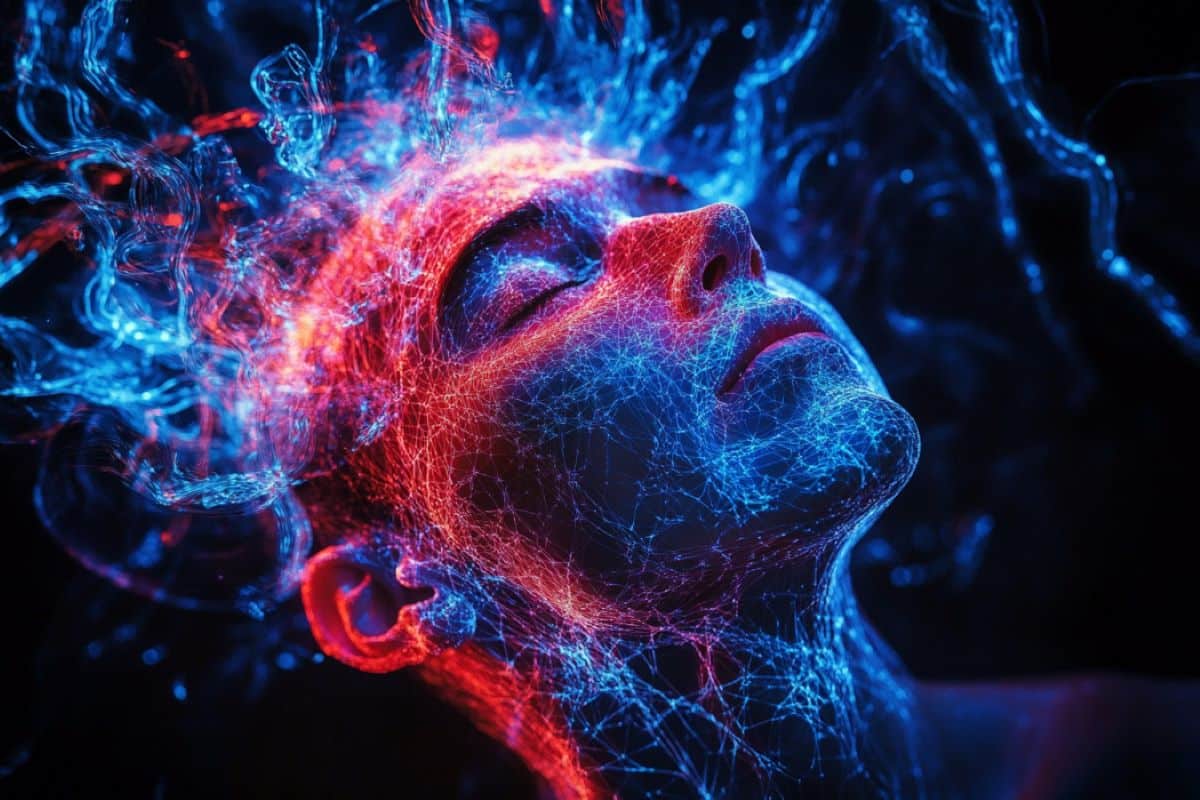Summary: A new study suggests that consciousness may be rooted in quantum processes, as researchers found that a drug binding to microtubules delayed unconsciousness in rats under anesthesia. This discovery supports the idea that anesthesia acts on microtubules, potentially lending weight to the quantum theory of consciousness.
The research challenges classical models of brain activity, suggesting that consciousness could be a collective quantum vibration within neurons. These findings could reshape our understanding of consciousness, with implications for anesthesia, brain disorders, and consciousness in non-human animals.
Key Facts:
- The study found that microtubule-binding drugs delayed unconsciousness under anesthesia in rats.
- This supports the quantum model of consciousness, challenging classical theories.
- The findings could influence our understanding of anesthesia, brain disorders, and consciousness in non-human animals.
Source: Wellesley College
For decades, one of the most fundamental and vexing questions in neuroscience has been: What is the physical basis of consciousness in the brain?
Most researchers favor classical models, based on classical physics, while a minority have argued that consciousness must be quantum in nature, and that its brain basis is a collective quantum vibration of “microtubule” proteins inside neurons.

New research by Wellesley College professor Mike Wiest and a group of Wellesley College undergraduate students has yielded important experimental results relevant to this debate, by examining how anesthesia affects the brain.
Wiest and his research team found that when they gave rats a drug that binds to microtubules, it took the rats significantly longer to fall unconscious under an anesthetic gas.
The research team’s microtubule-binding drug interfered with the anesthetic action, thus supporting the idea that the anesthetic acts on microtubules to cause unconsciousness.
The findings are published in the journal eNeuro.
“Since we don’t know of another (i.e., classical) way that anesthetic binding to microtubules would generally reduce brain activity and cause unconsciousness,” Wiest says, “this finding supports the quantum model of consciousness.”
It’s hard to overstate the significance of the classical/quantum debate about consciousness, says Wiest, an associate professor of neuroscience at Wellesley.
“When it becomes accepted that the mind is a quantum phenomenon, we will have entered a new era in our understanding of what we are,” he says.
The new approach “would lead to improved understanding of how anesthesia works, and it would shape our thinking about a wide variety of related questions, such as whether coma patients or non-human animals are conscious, how mysterious drugs like lithium modulate conscious experience to stabilize mood, how diseases like Alzheimer’s or schizophrenia affect perception and memory, and so on.”
More broadly, a quantum understanding of consciousness “gives us a world picture in which we can be connected to the universe in a more natural and holistic way,” Wiest says.
Wiest plans to pursue future research in this field, and hopes to explain and explore the quantum consciousness theory in a book for a general audience.
Wellesley students who co-authored the paper with Wiest are Sana Khan, Yixiang Huang, Derin Timucin, Shantelle Bailey, Sophia Lee, Jessica Lopes, Emeline Gaunce, Jasmine Mosberger, Michelle Zhan, Bothina Abdelrahman and Xiran Zeng.
About this consciousness research news
Author: Stacey Schmeidel
Source: Wellesley College
Contact: Stacey Schmeidel – Wellesley College
Image: The image is credited to Neuroscience News
Original Research: Closed access.
“Microtubule-Stabilizer Epothilone B Delays Anesthetic-Induced Unconsciousness in Rats” by Mike Wiest et al. eNeuro
Abstract
Microtubule-Stabilizer Epothilone B Delays Anesthetic-Induced Unconsciousness in Rats
Volatile anesthetics are currently believed to cause unconsciousness by acting on one or more molecular targets including neural ion channels, receptors, mitochondria, synaptic proteins, and cytoskeletal proteins.
Anesthetic gases including isoflurane bind to cytoskeletal microtubules (MTs) and dampen their quantum optical effects, potentially contributing to causing unconsciousness. This possibility is supported by the finding that taxane chemotherapy consisting of MT-stabilizing drugs reduces the effectiveness of anesthesia during surgery in human cancer patients.
In order to experimentally assess the contribution of MTs as functionally relevant targets of volatile anesthetics, we measured latencies to loss of righting reflex (LORR) under 4% isoflurane in male rats injected subcutaneously with vehicle or 0.75 mg/kg of the brain-penetrant MT–stabilizing drug epothilone B (epoB).
EpoB-treated rats took an average of 69 s longer to become unconscious as measured by latency to LORR. This was a statistically significant difference corresponding to a standardized mean difference (Cohen’s d) of 1.9, indicating a “large” normalized effect size. The effect could not be accounted for by tolerance from repeated exposure to isoflurane.
Our results suggest that binding of the anesthetic gas isoflurane to MTs causes unconsciousness and loss of purposeful behavior in rats (and presumably humans and other animals). This finding is predicted by models that posit consciousness as a property of a quantum physical state of neural MTs.







